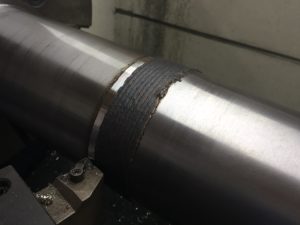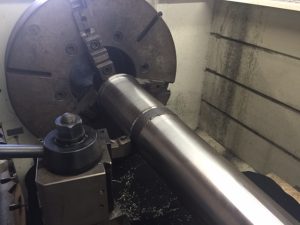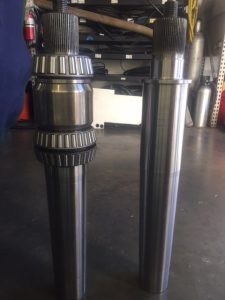A 130 foot Westport Yacht was recently hauled at Lauderdale Marine Center for routine service and maintenance. While in the yard, High Seas Hydraulics was contracted to overhaul the stabilizers and perform a standard 10 year service process on them.

Stabilizer shaft cladding
Once the stabilizers were removed, we found that the stabilizer shafts were corroded to the point that we needed to call on our machine shop, Straight Line Marine, to perform a process called shaft weld-overs, also known as cladding (or incorrectly “metalizing”). Shaft weld-overs or cladding is the process of repairing a worn or damaged area on a shaft. Stainless steel shafts can be damaged by excessive wear in contact areas, such as bearings or seals, due to long life or misalignment. Shafts can also be damaged from crevice corrosion or stray current corrosion.
Typically, if the wear is smooth and less than 0.010″ deep it is acceptable. Any crevice corrosion, stray current corrosion or wear in a lip seal area must also be repaired since lip-seals such as Naiad or Tides Seals need a smooth surface to maintain water tight integrity.

Stabilizer shaft on lathe
When repairing a shaft, it must be placed in a lathe and have the damaged area turned down to remove the damaged area. Never more than 0.125″. The area is built back up using semi-automatic MIG welding while slowly turning in the lathe. After cooling, the shaft is turned back down to close to the original shaft diameter.
Expert weld-overs cannot be detected by eye or feel once complete.

Finished product




